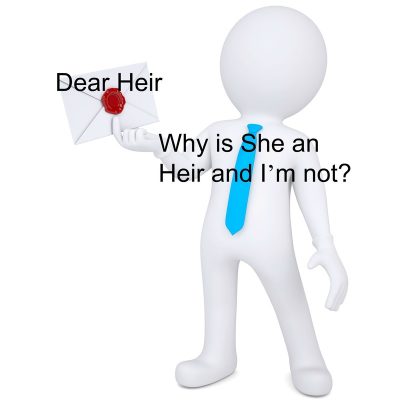
The variety of cases I get to work on can be challenging. I talk with people from every walk of life. Some don’t trust me. Others will go out of their way to help me find all of their family members.
Today held its own challenges. Explain to this elderly woman why she can’t be an heir to this estate while her sister can.
The individual who called me is none too happy about being excluded as a potential heir. The person’s argument is that she was raised by the deceased and has used his surname her entire life. She feels that alone should give her the right to be an heir to the estate. When asked if the deceased adopted her or was her biological parent she had to admit ‘no’ to both inquiries. In the state of Oregon an heir must be related by blood or adoption. Those of direct lineal descent are immediate family members out to a first cousin three times removed.This individual also admitted that ‘one sister’ does have this man’s name on her birth certificate. The ‘one sister’ is the only person who can be listed as an heir.
In the era before 1970 it was common for women in the United States who remarried to have their children use the surname of the new husband. After about 1970 parents were to register their children in school by the name the children were given at birth or at adoption.
A link to Probate Codes found where for all states?
When doing forensic genealogy you must know what the probate code is in the state the probate is to be filed in. Or you need to know where to look to find that information. Generally I review the code and then send a link to the attorney who has hired me to verify my understanding of the law in their state. I want to make sure I’m using the information from the newest webpage of their state. It is rather surprising that many states just put up a new webpage with no cross reference from the old to the new. Without checking with the attorney I might be working under the wrong assumptions!
You can find a link to every state’s probate code at Wikipedia.
